Abstract
Recurrence and survival data at 10 years were examined for 147 women with single axillary lymph node metastases found in a modified radical or standard radical mastectomy. The cases were identified through a review of all patients with primary operable breast cancer treated at Memorial Hospital from 1964 to 1970. The patients were stratified into groups according to size of the primary tumor and of the metastatic deposit (micro less than or equal to 2 mm; macro greater than 2 mm) as well as level of the positive node. In the entire series, there was a significantly poorer prognosis among those patients with single macrometastases (30/77 patients; 39% recurrence rate) when compared with those having micrometastases (17/70 patients: 24% recurrence rate). A major prognostic difference emerged after stratification by tumor size. Within the first six years of the follow-up period, T1 patients with negative nodes and those with single micrometastases had similar survival curves, significantly better than those with macrometastases. However, at 12 years, the survival rats of those patients with either a micro- or macrometastases was nearly identical, and significantly worse than for those patients with negative lymph nodes. On the other hand, among women with primary tumors 2.1-5.0 cm (T2), patients with negative lymph nodes or single micrometastases had survival curves that did not differ significantly throughout the course of the follow-up period. Both had an outcome significantly better than observed for patients with macrometastases. These findings have important implications for our understanding of the clinical behaviour of breast cancer and for the stratification of patients entered into randomized treatment trials.
Full text
PDF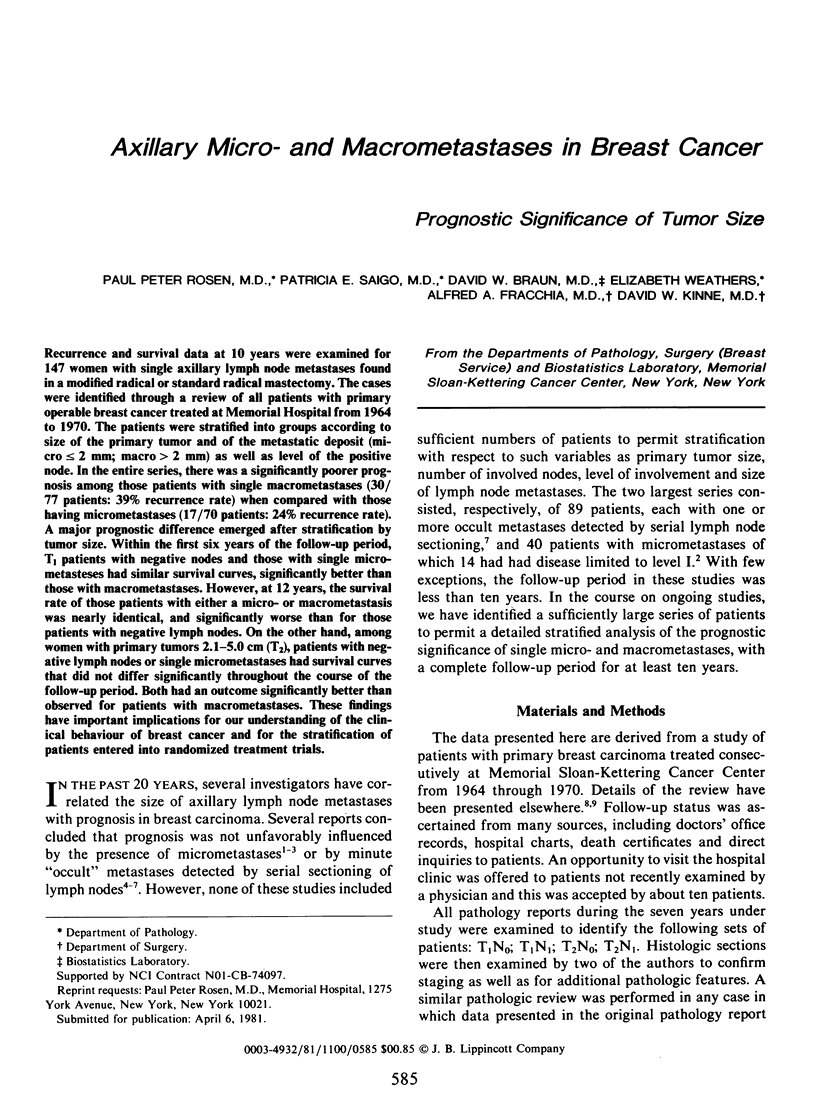
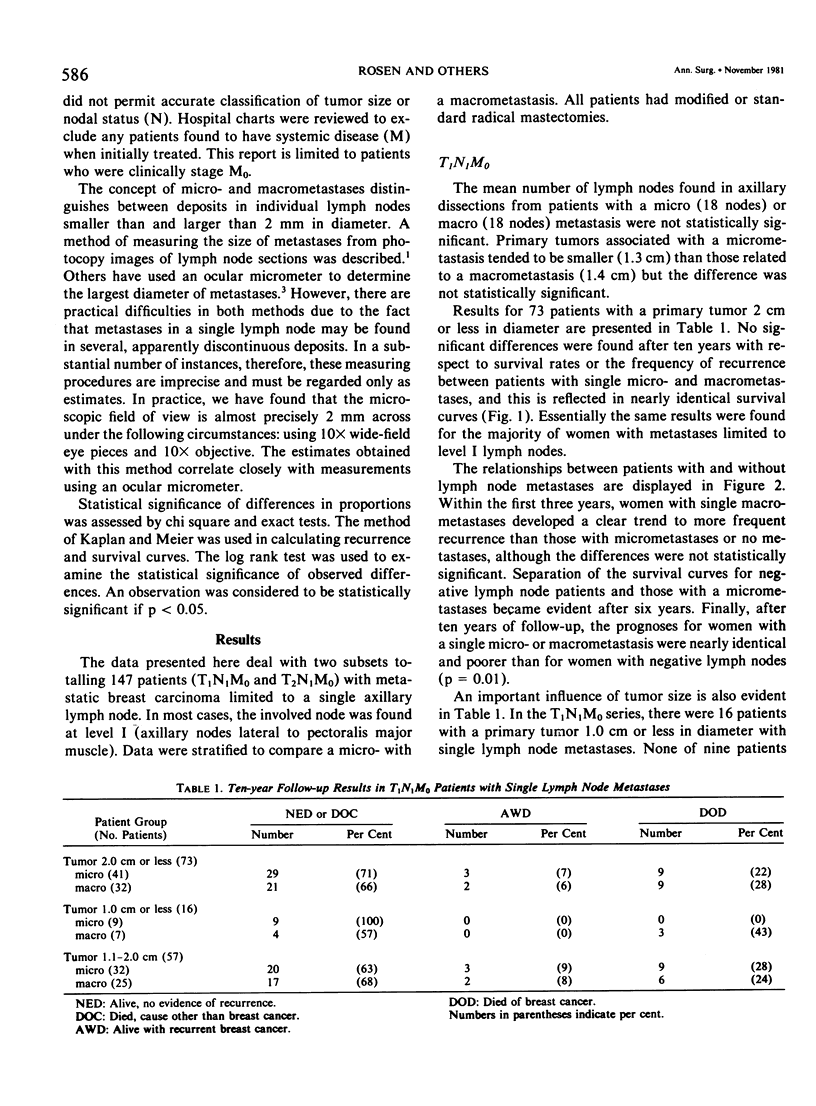
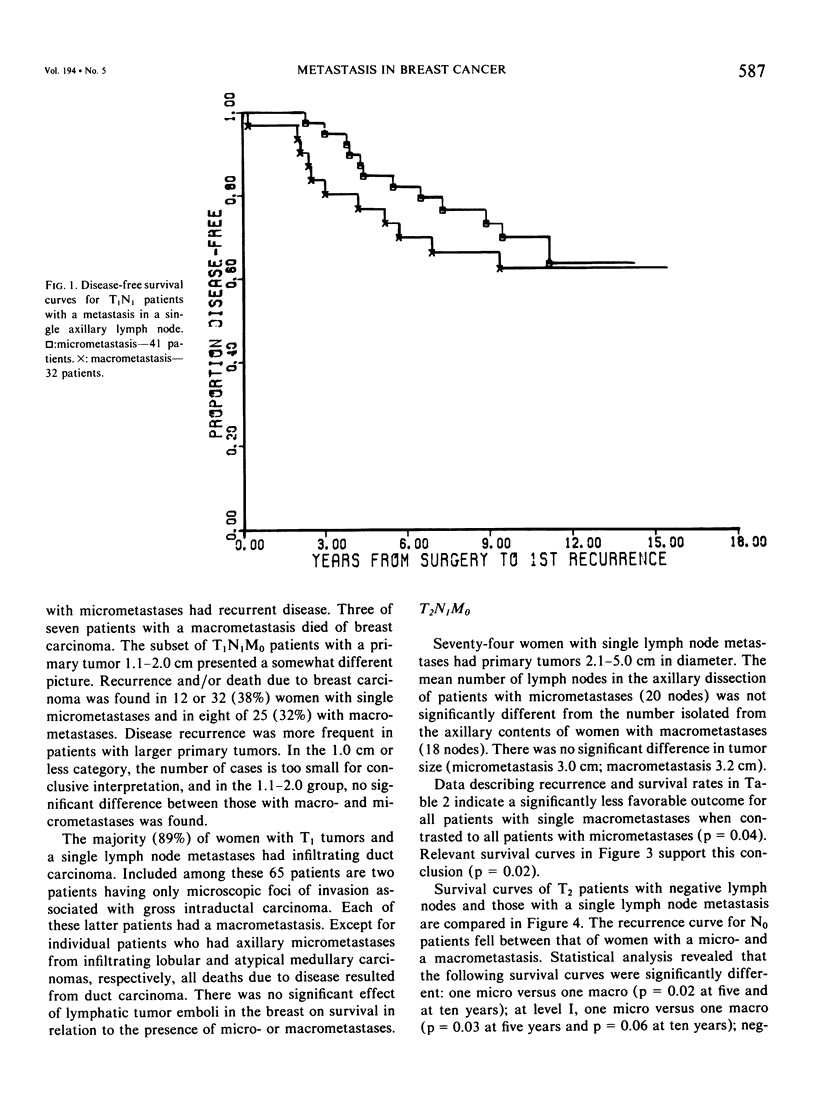
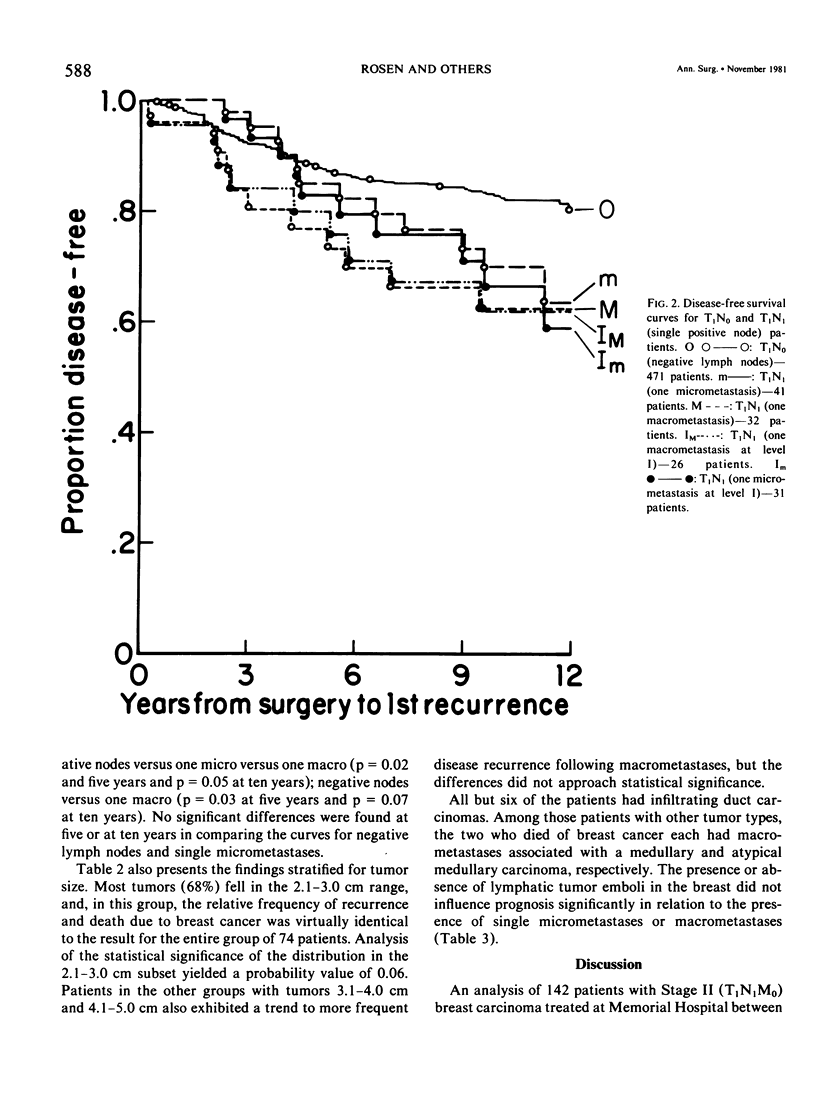
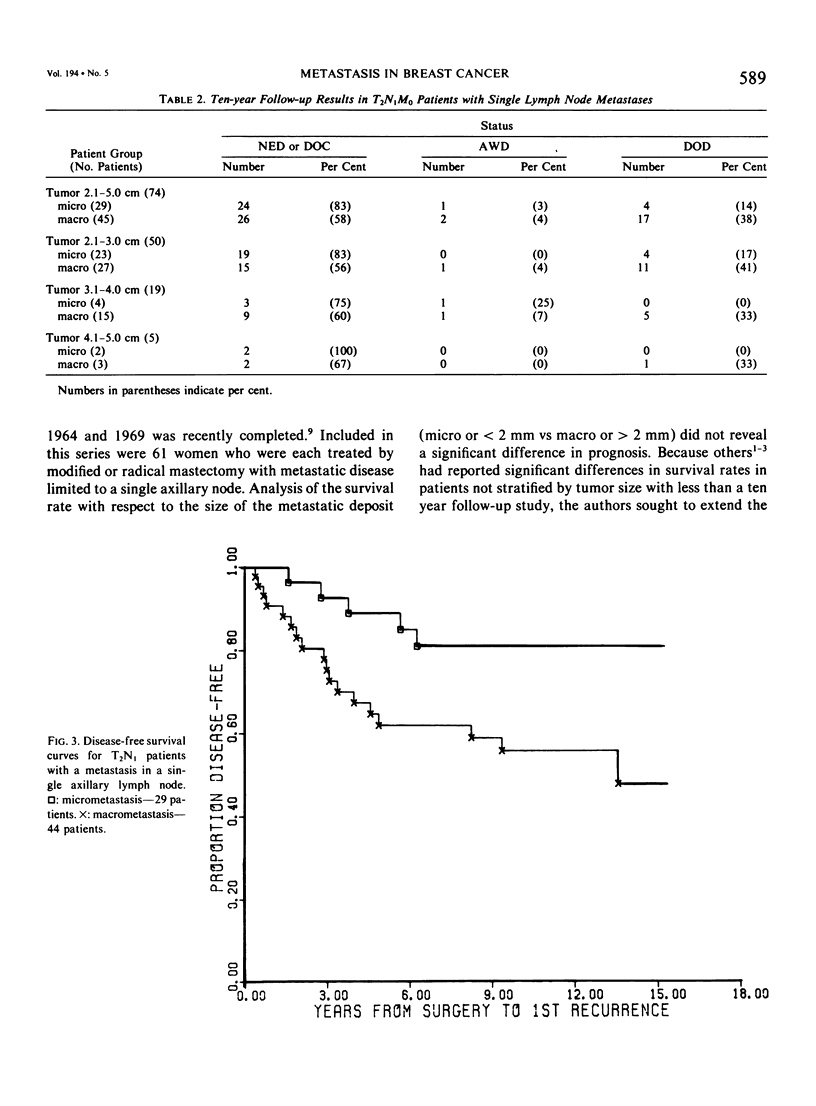
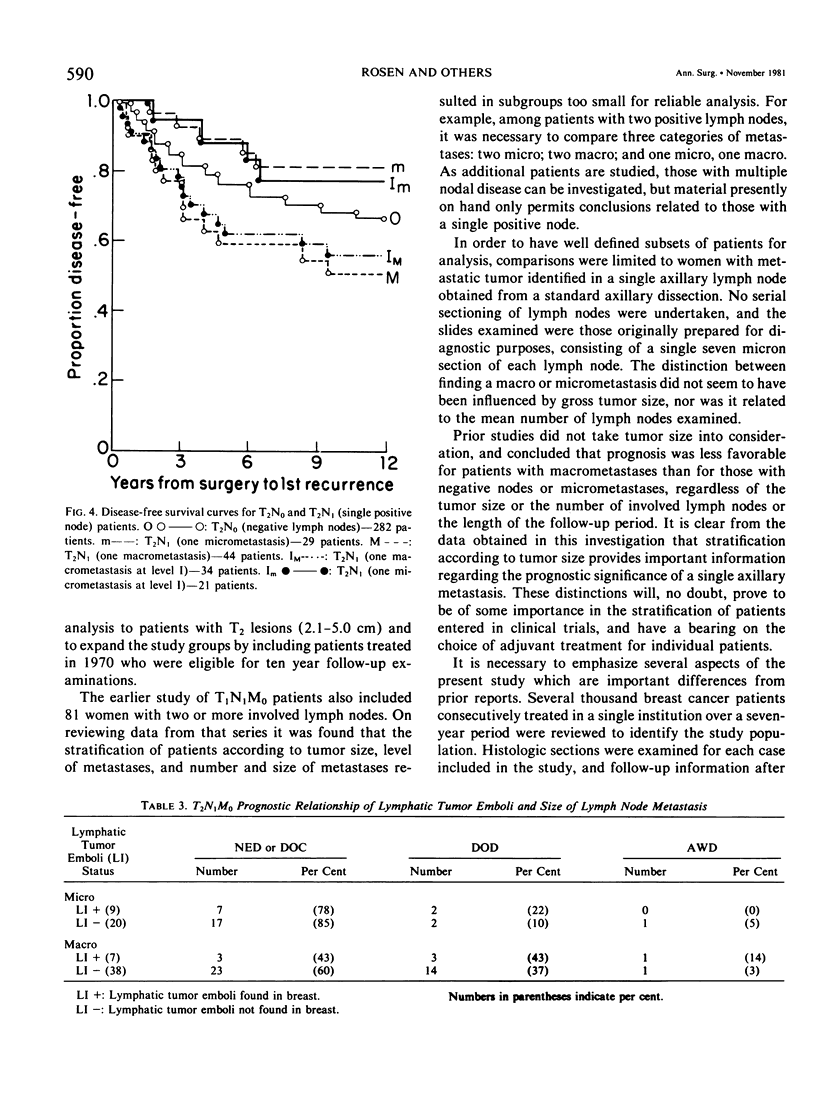
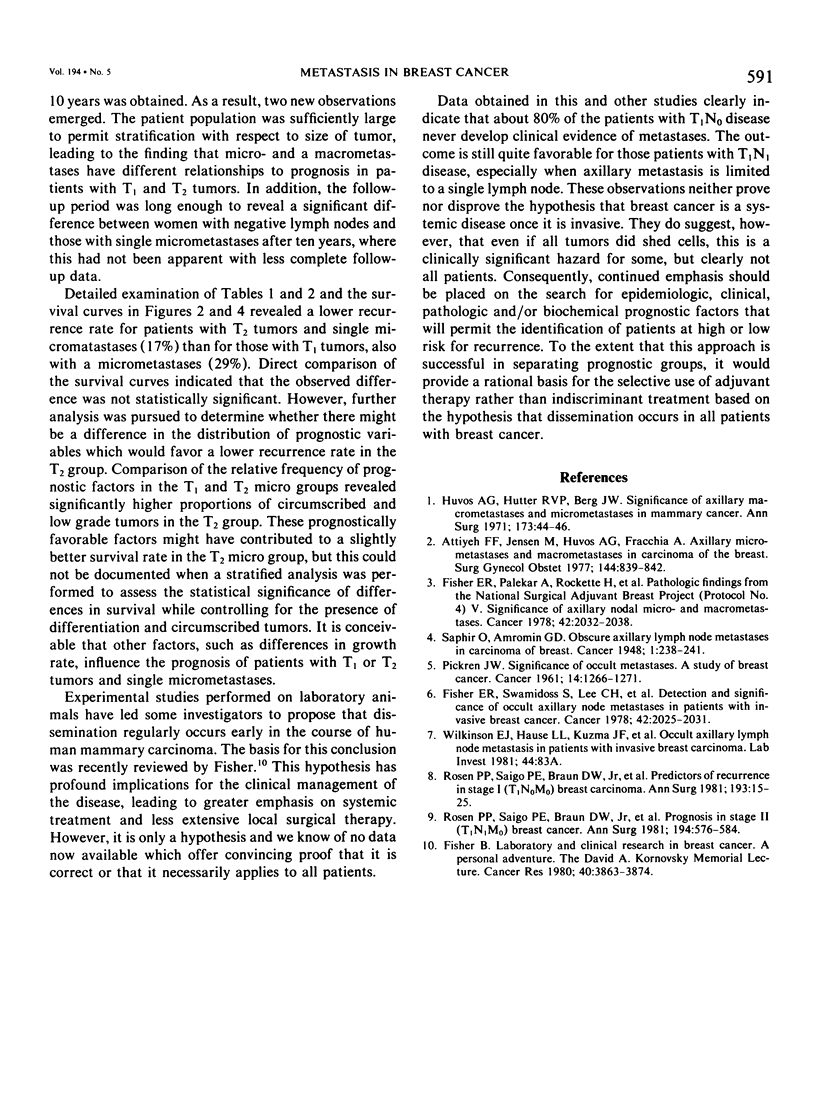
Selected References
These references are in PubMed. This may not be the complete list of references from this article.
- Attiyeh F. F., Jensen M., Huvos A. G., Fracchia A. Axillary micrometastasis and macrometastasis in carcinoma of the breast. Surg Gynecol Obstet. 1977 Jun;144(6):839–842. [PubMed] [Google Scholar]
- Fisher B. Laboratory and clinical research in breast cancer--a personal adventure: the David A. Karnofsky memorial lecture. Cancer Res. 1980 Nov;40(11):3863–3874. [PubMed] [Google Scholar]
- Fisher E. R., Palekar A., Rockette H., Redmond C., Fisher B. Pathologic findings from the National Surgical Adjuvant Breast Project (Protocol No. 4). V. Significance of axillary nodal micro- and macrometastases. Cancer. 1978 Oct;42(4):2032–2038. doi: 10.1002/1097-0142(197810)42:4<2032::aid-cncr2820420453>3.0.co;2-o. [DOI] [PubMed] [Google Scholar]
- Fisher E. R., Swamidoss S., Lee C. H., Rockette H., Redmond C., Fisher B. Detection and significance of occult axillary node metastases in patients with invasive breast cancer. Cancer. 1978 Oct;42(4):2025–2031. doi: 10.1002/1097-0142(197810)42:4<2025::aid-cncr2820420452>3.0.co;2-j. [DOI] [PubMed] [Google Scholar]
- Huvos A. G., Hutter R. V., Berg J. W. Significance of axillary macrometastases and micrometastases in mammary cancer. Ann Surg. 1971 Jan;173(1):44–46. doi: 10.1097/00000658-197101000-00006. [DOI] [PMC free article] [PubMed] [Google Scholar]
- PICKREN J. W. Significance of occult metastases. A study of breast cancer. Cancer. 1961 Nov-Dec;14:1266–1271. doi: 10.1002/1097-0142(196111/12)14:6<1266::aid-cncr2820140617>3.0.co;2-9. [DOI] [PubMed] [Google Scholar]
- Rosen P. P., Saigo P. E., Braun D. W., Jr, Weathers E., DePalo A. Predictors of recurrence in stage I (T1N0M0) breast carcinoma. Ann Surg. 1981 Jan;193(1):15–25. doi: 10.1097/00000658-198101000-00003. [DOI] [PMC free article] [PubMed] [Google Scholar]
- Rosen P. P., Saigo P. E., Braun D. W., Weathers E., Kinne D. W. Prognosis in stage II (T1N1M0) breast cancer. Ann Surg. 1981 Nov;194(5):576–584. doi: 10.1097/00000658-198111000-00005. [DOI] [PMC free article] [PubMed] [Google Scholar]


